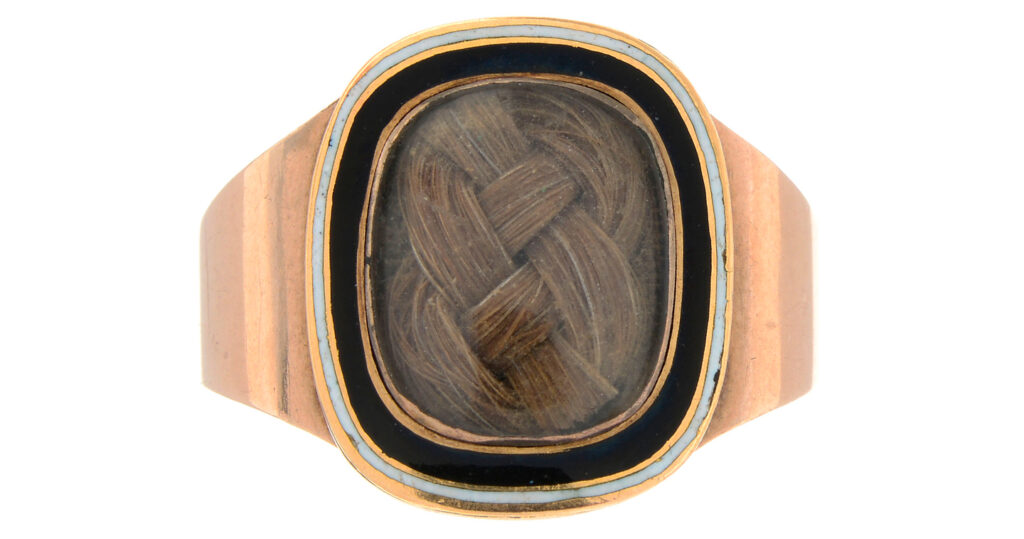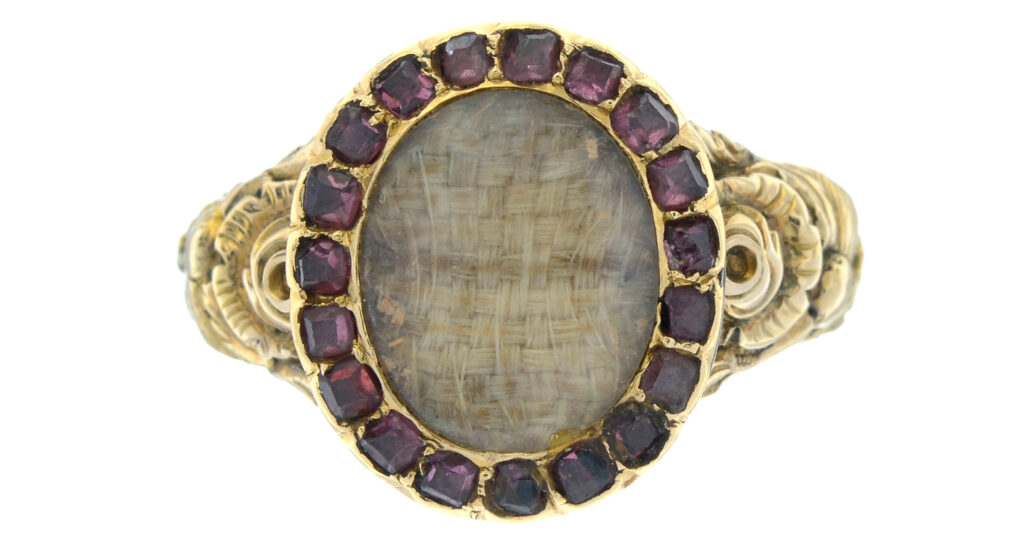How Society Entered Mourning: c.1680-1700 Memento Mori Mourning Ring
I’ve written quite a bit about memento mori, it seems to be one of those subjects that is as fascinating as it is polarising. Why is that so? Well, there are so many different connotations involved with the symbolism and that seems to be the crossroads (pardon the veiled pun) of what defines these magical pieces.
If you look to my post from Saturday about the 18th Century Skull on Pendant, then you will see the other end of the scale, which is clearly not a representation of death, but rather the statement of living. However, today we look at the other end of the spectrum with this very rare and very high quality ring from the collection of Marielle Soni is most certainly constructed with the intent of death and mourning. To discern this, firstly let’s look at the time and place of when it was created and why this was so popular.
This piece was constructed c.1680-1700 and we have many ways to check the validity of this. Firstly, we have the shank itself and note the embellishments. Often, pieces like this have lost their enamel inlay and are quite worn down, but this one is a perfect representation of how it was from when it was constructed. Note the Baroque influence in the design and how this would influence pieces of contemporary and later times. Particularly, the society in which this ring was created was dealing with the new found stability in the government due to the Restoration and from this, industry was finding new ways to create a niche in producing items for a society that was becoming upwardly mobile in ways that had not been seen since the Roman era. Appropriating popular art styles, such as that of the all-pervasive Baroque, and using its influence in products was (and still is) only a logical step in simply selling an item.
And to follow on from this, we have the skull and crossbones underneath the faceted crystal, an obvious choice for popular symbolism that was now quite heavily associated with death and grief. Gone was the clear establishment of a class that could afford to flaunt its wealth, standard of living and changed were the classes below that could not afford to live in such an almost narcissistic paradigm. Wearing a jewel to show that you will be judged and to live life for all its benefits is quite a grand statement during times with high mortality rates and a more feudal-based system of government, but during the 1670s-80s, there’s a strong shift to higher industry, specialised work and education. Politically, England was recovering from a civil war and the reinstatement of the kingship in Charles II in 1660, the Great Plague of London in 1665 and the Great Fire of London in 1666. There was a high mortality rate and Charles II was only beginning the process of the Restoration. Hence, pieces like this could allow themselves to become more commonplace, the symbols of death could be appropriated for an industry that was reacting to the execution of a king and a subsequent civil war, it could pick up on the nuanced tokens of affection that became popular from this and it could produce a product that was relatively easier to produce and almost the same to sell.

There is the elevation of this piece to a higher quality, simply due to the multiple facets to the crystal, which is elaborate for a piece of this kind. Often there is less faceting in pieces of this kind, but here we have the crystal to be elevated and set inside a raised area of the bezel. This seems rather unusual for a piece of this kind, often the crystal is set directly inside the gold-work and then faceted to a less-raised dome, which is more typical of the 1680s styles. However, the bezel itself is round, which puts it at the earlier end of the scale, whereas octagonal and harder edges on these pieces (particularly in slices), often occur around 1700-1720.

Underneath the bezel is where one can interpret the style is a more certain way. Here, the remnants of the enamel inlay to pronounce the ring upwards from the finger (in almost the style of a crown), matches the ring to the better part of the 1680s.
Note the rosette shape of the underneath of this ring. Here is where you can get a good idea to date a ring. These pieces are much more prolific during the 1720s-1760s, with the rosette shape splaying the bezel upwards, however, the ring that we’re looking at today is quite flat underneath.
Finally, there’s the skull and crossbones themselves. There are two kinds of styles for application of the memento mori symbols during this period, one is to paint the symbol directly on to hair/material and the other is to paint a metal symbol in high-relief and place that symbol on top of woven hair or material. In this piece, we have the former and also not a high degree of detail to the skull and crossbones themselves.
When dating these, one must consider that the memento mori symbolism can either be rushed due to the immediacy of time close to the death and the necessity of the piece, the rather un-pioneered style being applied to jewellery that had no precedent for style, the quality of the jewel or (in the case of modern reproductions) is the symbol intentionally painted this way to confuse the collector into thinking it’s genuine. All are valid to some degree and we can’t benchmark early pieces against each other as there’s no ideal for what they had to be. Much like the jewels created for Charles I, there were simply a large base of people who required them and many different sources of production.












